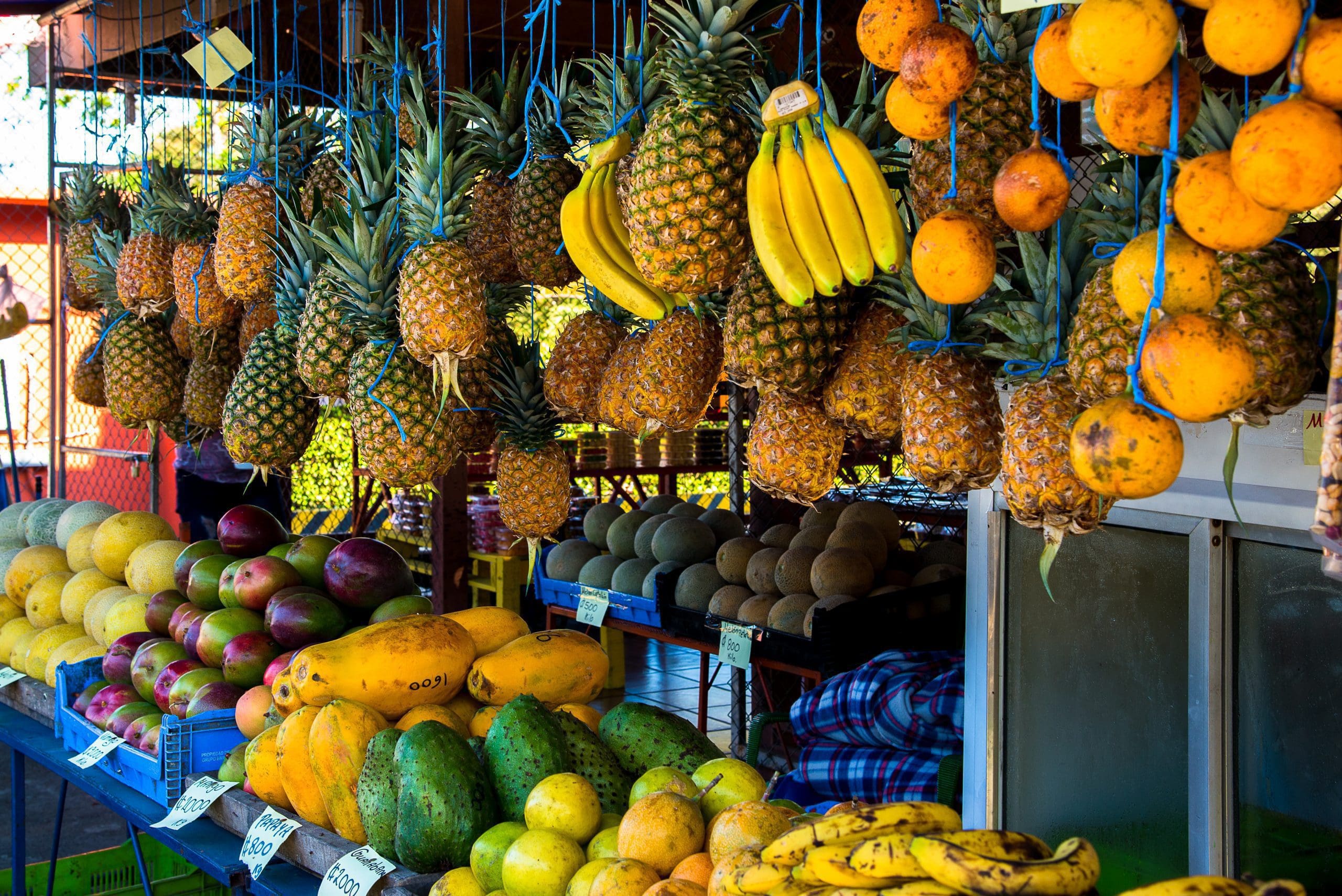
Nature’s Abundance
Agriculture has always been vitally important to Costa Rica’s self-sustainability, while also playing an integral part in the Gross National Product for more than two centuries. The country’s diverse climates ensure a wide variety of fruits and vegetables can thrive, while dictating where these cash crops are best grown.
Coffee, specifically, is harvested from plants grown in the cooler mountain regions. It has been Costa Rica’s leading export product since the end of the 18th century.
The introduction of international big business into the economic equation has resulted in mono-agriculture plantations producing solely one of the next three biggest food export crops: bananas, pineapples or sugar.
Overall, Costa Rica’s fruit and vegetable production accounts for about 10% of the nation’s economy, comprising about one-fifth of its labor force. Agriculture, in turn, uses about 10% of the country’s land. It is a compact investment with very high returns.
Small-scale sustainability
The real surprise is that Costa Rica’s agricultural economy has maintained a familial feel: nearly half the farms here are less than 10 hectares (about 25 acres) in size. Sustainable farming has been practiced for centuries, but techniques such as crop rotation are being adopted more widely. Farmers have learned, for example, that planting tomatoes or legumes in the same area where corn was planted the previous season replenish that soil’s nitrogen level.
In addition, the benefits of “companion planting” are being demonstrated. Incorporating natural insect deterrents such as mint and lemongrass with vegetable plants keeps invasionary insects like the foraging Japanese beetle at bay, while also yielding a secondary, herbal crop.
Many Tico farmers have discovered the drawbacks of the “slash and burn” technique. More and more, they are opting for reforestation and selective tree felling, recognizing the long-term benefits of these practices.
Ambitious outlook
These grassroots organic farming experiments have become the petri dish for agriculture’s larger-scale future at Costa Rica targets becoming the first carbon-neutral country on the planet.
Ironically, all these farming techniques have been employed by Costa Rica’s indigenous Bribri nation for at least 3,000 years. In the Talamanca region especially, the Bribris practice a subsistent agroforestry. They harvest the natural growth beneath the forest canopy while rotating their introduced vegetation within the forest. Nutrient recycling is in the form of bat guano and composting to replenish the soil, thus deterring insects and other plant predators.
Embracing centuries-old practices that have kept Costa Rica such a bountiful garden may be the key to progress on several promising fronts.
